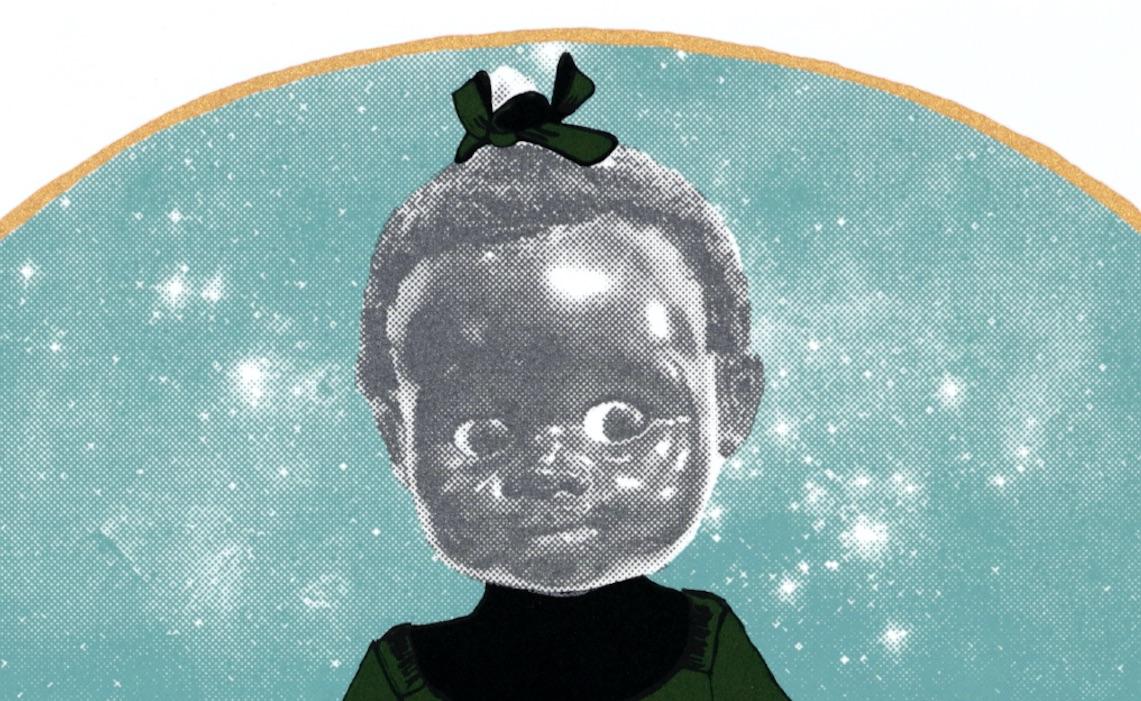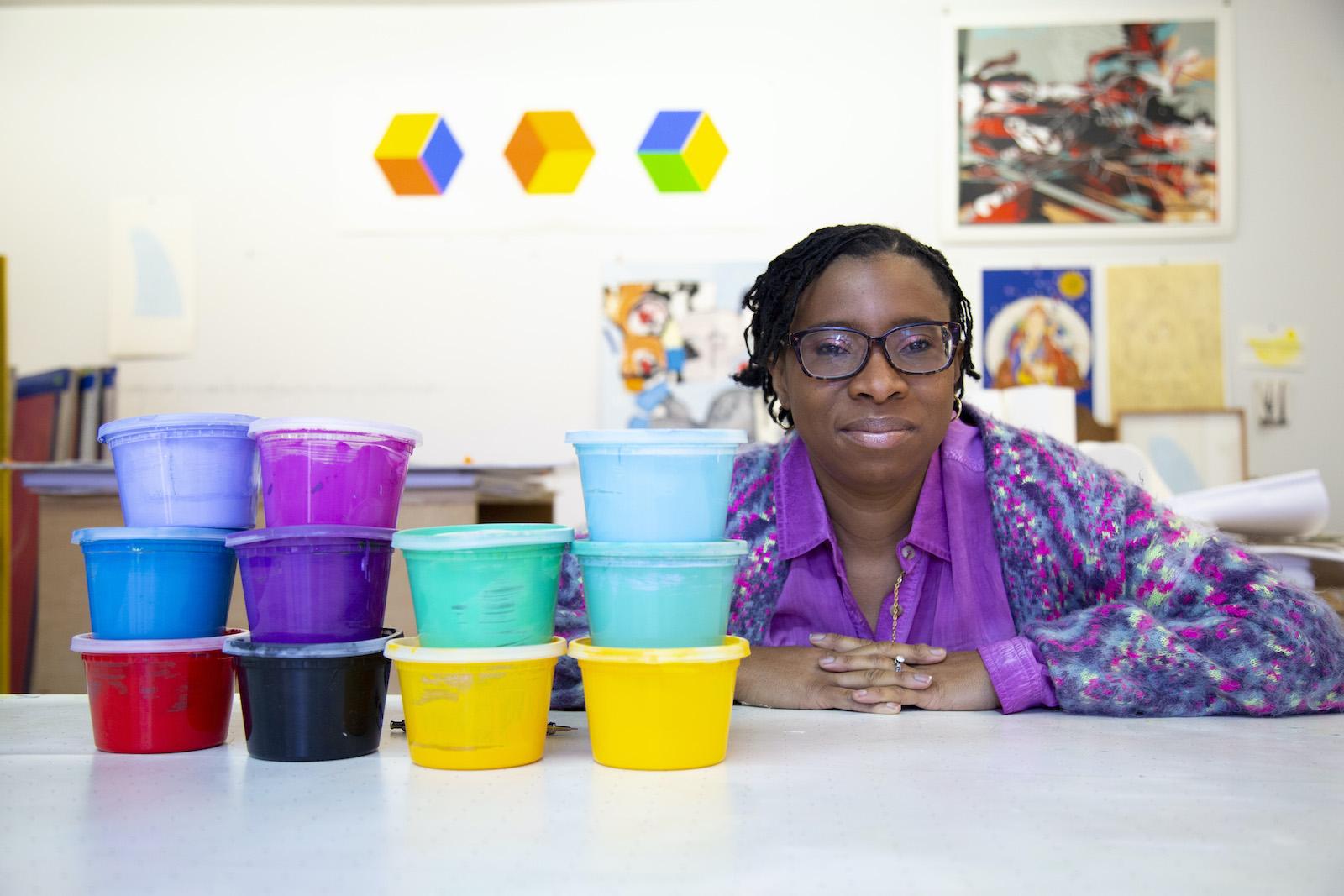Children of the Sun features two formally distinct bodies of work: a grouping of twelve varied-dimension silkscreens featuring the doll-like figures, and a pair of color lithographs. The color lithographs – Black Boy Hope I and II – respond to the wrongful execution of an innocent fourteen-year-old African-American boy, George Stinney, who was falsely accused of murder with very little evidence (his conviction was overturned in 2014, seventy years after he was killed).
“Historically, the Black body has continued to be mutilated, warranted, violated, attacked, targeted, protested, kidnapped, abused, and mocked in the media. The Black Boy Hope lithographs depict a bright future that we hope to secure for all African American children. Floating and visually unanchored to tangible realities, the subject has the freedom to be joyful, great, and can determine his own future without biases or stereotypes. The prints are made up of various visible layers that represent the everyday experiences of African Americans as victims but also as resilient survivors.”
On a personal level, Mack-Watkins cites her experience as a mother to two young children (at the time of the pandemic onset, her daughter was four years and her son was two months) as a foundational influence on her recent work as a whole.
“I am always searching for positive ways that I can encourage my children to play and use their imaginations. Growing up in South Carolina, the available children’s stories and toys either failed to represent my community or represented it as ‘other’ or ‘less than.’ So, in present-day, I see the value in finding toys that look like my daughter in order to build her self-confidence. I am always on a constant hunt to find books, coloring books, reading books, and dolls that have a positive representation of African American children. The Brownies’ Book resonates with me so strongly because it was the first content of its kind to uplift, promote self-esteem, and educate about the contributions of African Americans. In preparation for this exhibition, I wanted to do the same, so I focused my research on the African-American experience as it pertains to oral history, memory, literature, childhood, and period fashion.”
Mack-Watkins, who holds a Master’s in Printmaking from Pratt, favors the printmaking medium to explore this subject matter because it allows her to engage with layered complexities in a way not afforded by other mediums; also uniquely to printmaking, “prints exist as multiples which enables them to become part of a larger dialogue,” explains the artist.
“For these works on paper, I chose the medium of printmaking because of my fascination with the process of layering elements, textures, and colors upon one another to create a uniform image through sequential stages. I believe in the beauty of printmaking and its history of being a source of communication. In my prints, I combine hand-drawn elements with digital methods to create narratives based on particular ideas. I use photographic imagery from vintage magazines, advertisements, newspapers, and literature as a way to counteract how media and popular culture flood society with harmful stereotypical perceptions of my culture.”
Children of the Sun is guest-curated by David Rios Ferreira (visual artist, independent curator, and Director of Public Programs and Curator of Contemporary Art at the Children’s Museum of Manhattan).






























